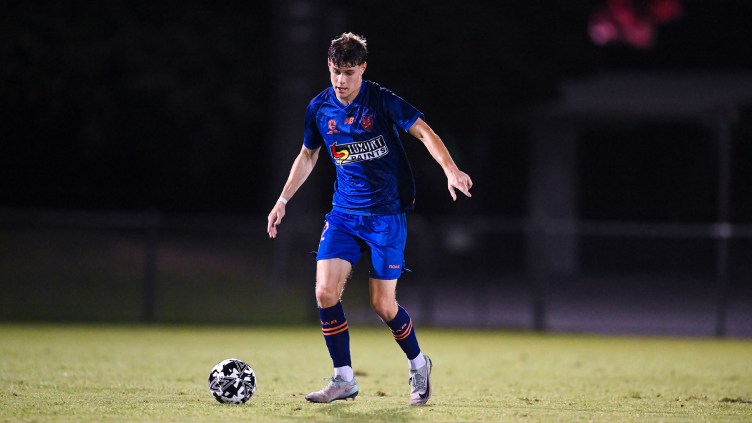FFA’s unveiling of the National Premier Leagues might not have grabbed the headlines but this is the biggest structural change to the game since the NSL was launched in 1977.
From small seeds, big things can grow. Football Federation Australia’s unveiling of the National Premier Leagues blueprint might not have grabbed the headlines, but don’t be fooled. This is the biggest structural change to the game since the NSL was launched in 1977.
Whether the NPL fulfils its charter remains to be seen, but if it’s handled with care anything is possible. The relationship between head office, the state federations, and the 118 clubs which will ultimately participate is the key. Trust, or mistrust? That’s up to those involved.
The fact that the blueprint is the product of two years of consultation suggests the project has the potential to get off to an encouraging start.
That five out of eight states have agreed to kick-start the revolution next month is more reason for hope.
What mainstream media coverage did flow from David Gallop’s announcement was, predictably, focused on the dream rather than the reality.
Promotion and relegation, a national second division, and the FFA Cup are exciting concepts. We’d all love to see them happen. But the truth is they’re a fair way from fruition. The here and now is much more mundane, but no less significant.
Fundamentally, it’s about putting the building blocks in place to rejuvenate second-tier football across the country. Only when that’s achieved can we talk about re-establishing closer ties to the top tier of the game.
Those ties have, of course, progressively loosened since the NSL was launched 36 years ago as the first national sporting competition in the country (beating the National Basketball League by two years).
The idea of a national league had been discussed for more than a decade, but the various state federations consistently baulked at the idea.
Mostly they cited costs as an excuse, but there’s no doubt the inevitability of their own competitions losing their pre-eminence was also a major factor.
After all, state-based competitions (in effect confined to capital cities) had been the cornerstone of club football for almost a century.
Australia’s qualification for the 1974 World Cup finally provided the spark to bring the factions together, and the NSL was formalised a year later behind the heavy drapes in the old St George club in Mortdale, Sydney.
But the fact some of the bigger clubs of the era – including Sunshine George Cross, Brunswick Juventus and APIA-Leichhardt – didn’t take part in the early seasons underlined a lingering sense of hesitation.
Ultimately, of course, a place in the NSL became the prize for every ambitious club, and state league football has largely survived on the margins ever since. You could write a thesis on who’s to blame.
For a while, the two tiers of football didn’t seem that far apart. Clubs like Sydney Olympic, St George, Blacktown City, West Adelaide and Brunswick Juventus all bounced between the NSL and state leagues.
But the gap eventually became a gulf – certainly in commercial terms – and it’s only widened since the advent of the Hyundai A-League.
Bridging this gap requires major reforms, serious investment, and tough decisions. Fixing second-tier football is not a choice, but a necessity. And it’s become urgent.
Look what’s happened to rugby since the arrival of Super Rugby. It’s been in meltdown at club level, and some doubt it will ever recover. With a much deeper talent pool, and a far greater geographical spread, it would be a tragedy to see football squander its inherent advantages. Thankfully, that’s why the NPL has come about.
Seventy clubs across five states (see table below) are to be the vanguard of the new era. To participate, they needed a license, and to get a license they had to meet a range of criteria.
Much of the focus is on player development, with each club required to field junior teams from under-12s to under-20s, employ a qualified technical director who will work within the state technical framework, and to develop links to local association clubs in order to create a feeder system.
Fundamentally, the FFA wants state league football to be about younger players, and better-coached players – a worthy philosophy.
In order to nudge the clubs in this direction, a Player Points System (PPS) has been developed which rewards clubs for playing younger players, and penalises them for every player they use over the age of 25.
If there’s part of the NPL process I have reservations about, this is it. To me, an older player with the right attitude – say Gareth Edds (Northern Fury, Queensland) or Nahuel Arrarte (Marconi Stallions, NSW) – has an enormous contribution to make in a dressing room.
If you remove them from this semi-pro environment, does it help or hinder a young player’s development? I guess we’ll see.
What we do know is that the NPL is going to shake the tree. Good, because something had to be done to rescue second-tier football from oblivion.
At this point, the blueprint is written in ink rather than stone. Concessions will be made during the transition phase – including parts of the PPS.
In order to dilute the cost burden and create incentives, the FFA has almost doubled transfer fees (from state league clubs to the A-League) and substantially subsidised certain coaching courses.
And the FFA is also pushing the states to give those clubs who have invested in the NPL program a license for at least two-to-three years as a form of security.
Certainly, it’s still going to be an expensive exercise, particularly in those states which have placed an emphasis on facilities. But hopefully it’s a price worth paying.
John Boultbee, the Head of National Development, is sure it is.
“This is all about consistency, and lifting the standards,” Boultbee says.
“Clubs have to significantly improve their youth development, their coaching standards, and also their governance structures and facilities.
“What we want out of this is more players coming out of state leagues into the AIS, into our national youth teams, and into the A-League. There’s an obvious benefit to the game from all of this, but there’s also a benefit to the clubs, because it gives them a chance to raise their profile and build a future.
“If the clubs improve the way we want them to, they could one day be ready for the A-League themselves. That’s not the moving force behind this, but who knows?”
Who knows, indeed.
National Premier Leagues clubs (2013)
QUEENSLAND
Brisbane City, Brisbane Strikers, Brisbane Olympic, Western Pride (Ipswich), Redlands United, Moreton Bay Jets, Sunshine Coast Fire, Far North Queensland Bulls (Cairns), QAS, Northern Fury (Townsville), Palm Beach Sharks (Gold Coast), Central Queensland FC (Rockhampton).
TASMANIA
Northern Rangers (Launceston), Devonport City, Launceston City, Glenorchy Knights, Hobart Olympia, South Hobart, Kingborough Lions, Hobart Zebras.
SOUTH AUSTRALIA
Adelaide Cobras, Adelaide Raiders, Adelaide Comets, Adelaide City, Adelaide Blue Eagles, MetroStars, Enfield City, Cumberland United, White City, Para Hills, West Torrens Birkalla, Croydon, Western Strikers, Campbelltown City.
ACT
Belconnen United, Canberra City, Canberra FC, Canberra Olympic, Cooma Tigers, Monaro Panthers (Queanbeyan), Tuggeranong United, Woden Valley.
NSW
Sydney United, Sydney Olympic, APIA-Leichhardt, Central Coast Mariners (Lisarow), Marconi Stallions, Blacktown City, Sutherland Sharks, Blacktown Spartans, Manly United, Bonnyrigg White Eagles, South Coast Wolves (Wollongong), Rockdale City.



